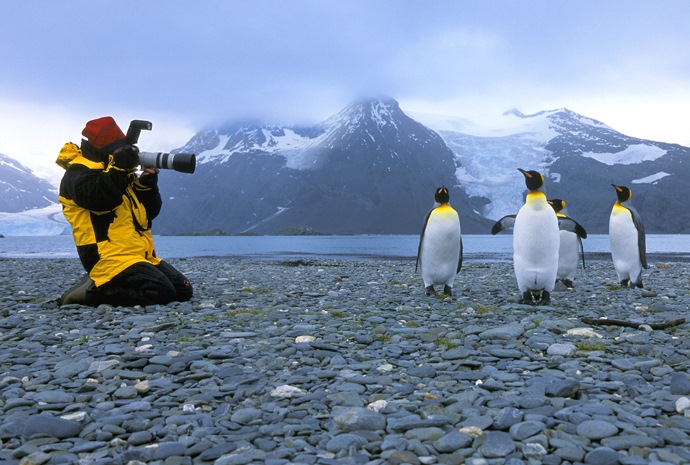
Our cruises take you to some truly spectacular areas of this most southern part of the world and you can expect opportunities to experiment with photography in Antarctica. Choose one of our select cruises that hosts onboard photography workshops to really make the most of your trip. With an expert on hand to offer tips and advice you’ll be returning home with photos you never thought possible. Blessed with the magical backdrop of the towering icebergs as your starting point, your images will be enhanced with birds in flight, wallowing seals, colonies of penguins and much more and, as each day dawns, new opportunities for making memories arise.
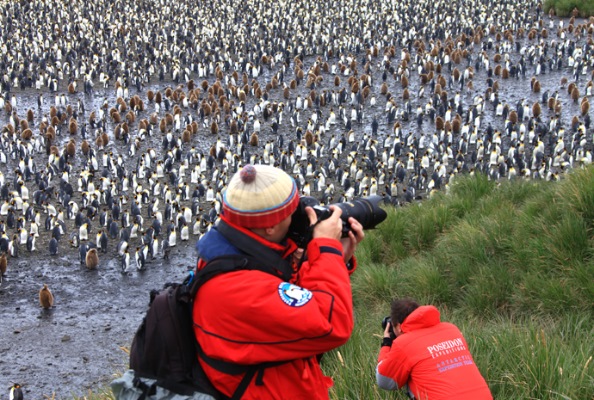
Landscape Photography in Antarctica
When it comes to landscape photography in Antarctica, opportunities are endless. This desert of ice and snow punctuated by glaciers, volcanoes, dramatic coastlines and towering mountains creates unrivalled scenic beauty. It is not surprising that this region of our planet is a bucket list destination for many snap happy guests.
Before heading off, however, it is a good idea to do a little research about how to achieve the best images. After all this may be a once in a lifetime chance to visit this region and you really want to return home knowing you gave the photography the attention it deserves. This is a very unpredictable area of the world and knowing how to capture its essence while dealing with the stark light, the adverse weather conditions and much more is very important.
Tours almost always run in the summer (December and January) which means that guests get the best of the weather and can enjoy the months of the Midnight Sun. The endless light means plentiful photo opportunities and with the shadows changing throughout the day and altering composition more interesting images are created. The Midnight sun however does mean that there are no golden sunsets, but this is a small price to pay for the alternative.
Photographers can find it difficult in this light to create contrast of colours so always try to incorporate some form of darkness into your frame. Look for rocky outcrops, clouds and far away rainstorms enveloping landscapes as points of contrast. These can also create mood and ambience. Another option for adding focus to your landscape image is to use the wildlife around you. Throw in a penguin or two and the extra interest creates a whole new perspective on the image.
It is a good idea to get familiar with your shutter speeds before you embark on photography in Antarctica. On bright days with strong reflections of the sun off the snow, the faster the shutter speed the less exposure to light and therefore reduced chance of overexposed pictures. Faster speeds can also be used to get really sharp images of detail in the foreground while slower speeds can be used for artistic effect, particularly if it is snowing or raining.
Landscape photography in Antarctica can be much improved by incorporating a polarising filter. The idea of this kind of filter is to bring out the colours, which as we have already said is important when taking pictures in this kind of bright winter landscape. The filter creates contrast and balance and tones down the mount of light in the image without the need for shutter speed or aperture adjustment.
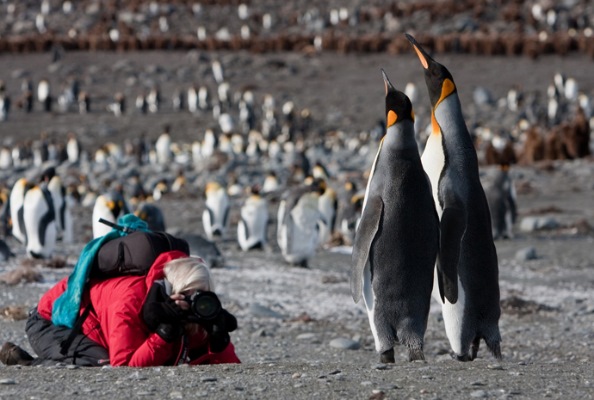
Capturing Wildlife
As with anywhere else in the world this kind of photography requires patience first and foremost, but there are other considerations too. You must always follow the rules set out by your guides and never get closer than 5m to an animal. If an animal approaches you, remain still and don’t make any sudden movements. They are only being inquisitive, and you are the intruder in their world so you must respect it.
Generally, you don’t need to worry about the light as there is always plenty in this part of the world, whatever season it is. No big apertures are required and you don’t really need to fuss about your ISO either.
Animals here all live very differently, making their homes in different settings and moving at varying speeds. They all require different considerations when it comes to capturing their images, so here are our tips on how best to capture fabulous images of animals in different settings.
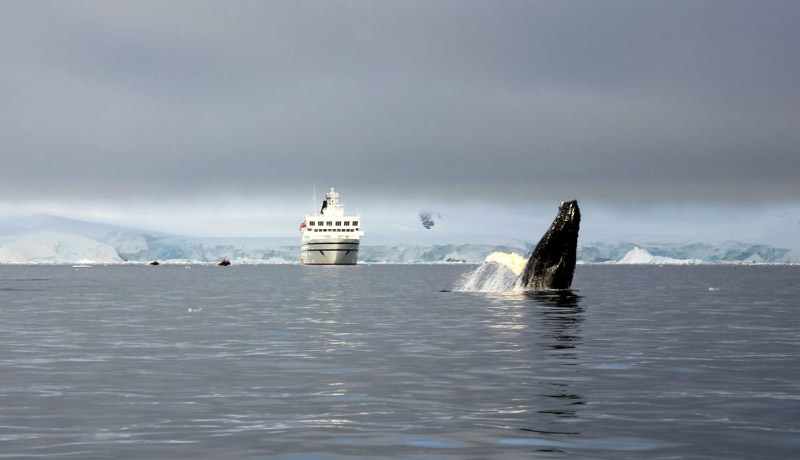
Animals in the Water
When considering taking a picture of a whale you will most likely require a zoom lens of 100-400mm and sometimes up to 600m. If, however, you are lucky enough to have a whale come much closer to you while you are in a zodiac for example, then you won’t need such a large zoom.
If the whale is moving fast, you may wish to use a fast shutter speed. We recommend 1/2000-4000th of a second as a good baseline.
Animals to Look Out For:
Antarctic Orca
Blue Whale
Commerson’s Dolphin
Humpback Whale
Minke Whale
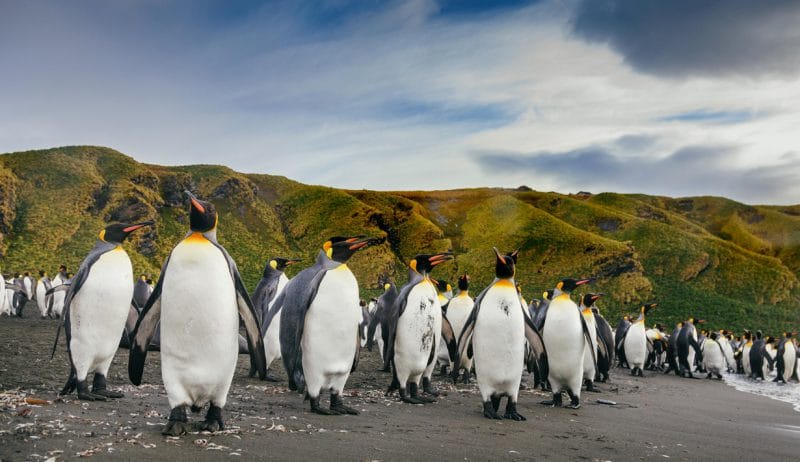
Animals Onshore
Wide-angle lenses are great for snapping penguins onshore. If you are aiming to create portraits of seals or penguins, you won’t need a very fast shutter speed. These animals tend not to move very quickly and rarely make sudden movements.
Tripods can be useful for capturing animals on land, especially if you want to take a video too. Be aware, however, that winds can be strong and this can affect tripod use.
Classic portraits of the animals are wonderful but remember to take shots that include the scenery too. This tells more of a story about the animal and its intrinsic link to its environment.
Animals to Look Out For:
Adelie Penguins
Emperor Penguins
Weddell Seals
Leopard Seal
Gentoo Penguin
Fur Seal
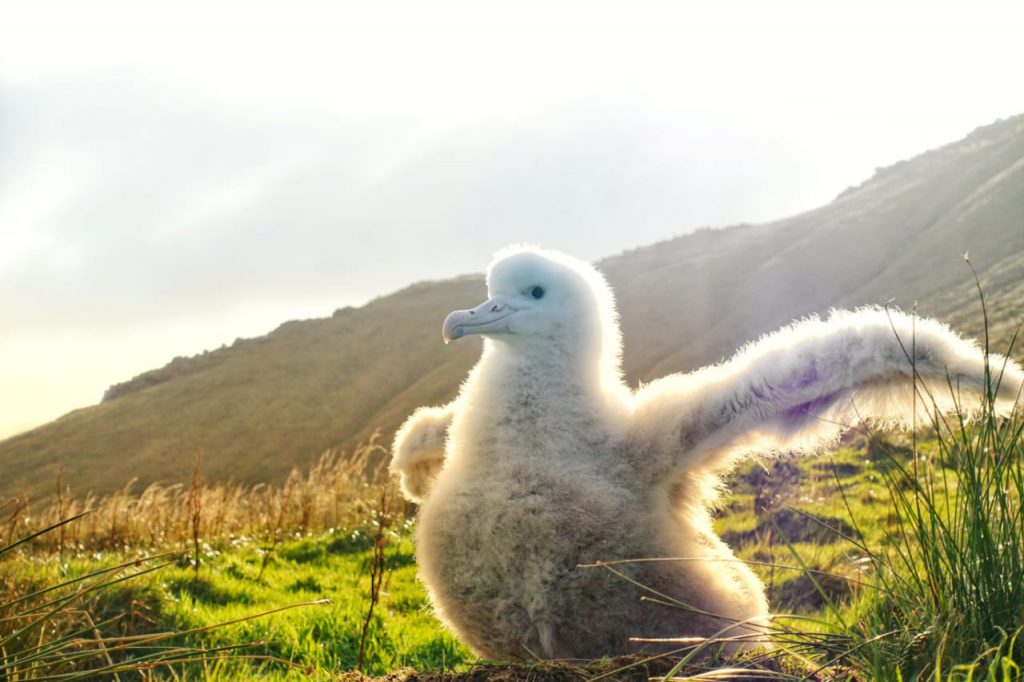
Birds in Flight
A good tip when trying to capture birds in flight is to watch them carefully first. They often make repeated patterns in the air and many actually follow the cruise ships. Once you have tracked their flight you can make a better judgement about how to photograph them. Remember to use a faster shutter speed of 1/2000-4000 of a second.
Birds to Look Out For:
Penguins (of course)
Albatross
Antarctic Petrels
Brown Skua
Our Expert Photographers
At the heart of Northwinds Photography is husband and wife team, Dave and Dawn Wilson. Their passion for wildlife and landscape photography in Antarctica and other diverse and exciting regions of the world is contagious.
The Antarctic and surrounding areas of South Georgia and The Falklands have long been wish list destinations for anyone interested in photography in Antarctica, thanks to the variety of photographic opportunities on offer that is both enthralling and unique. The list of ‘want-to-see’ items is naturally pretty extensive. Our hope, however, is to be able to expand our photographic horizons, experience and hopefully capture the magic of the location and the creatures that inhabit this inhospitable land. We also aim to enrich our understanding and appreciation for the beauty and diversity of planet Earth.
1) Pre-Trip Considerations (with hindsight after a few days)
a. Consider the need for back-up equipment / redundancies – on the Sea Adventurer, once you leave Ushuaia there aren’t a lot of options available to either repair or replace a piece of equipment if it goes wrong.
b. Think about weather protection, as you are almost certainly going to encounter bad weather while taking photos (rain, high winds, hail, sandstorms, sea spray – and that was on just one landing). As a minimum you will need something to dry the camera and if you are not using pro grade equipment that is suitably weather sealed, be extra careful that the elements are not going to destroy the electronics.
c. There have been a lot of forum discussions about whether you should take filters. I’m not a fan of UV filters as I don’t want to add an extra layer of (cheaper) glass in front of a (relatively expensive) lens. A circular polarising filter, however, can be very useful for bringing out contrast and reducing glare when the sun is out (there are lots of reflective surfaces out here).
d. Take lens hoods and use them. Religiously. They protect the lens front from many of the elements and prevent lens flare when the sun is at the wrong angle.
e. Get familiar with your equipment. If you are going to treat yourself to that nice new camera or lens for your photography in Antarctica extravaganza, bite the bullet with sufficient time to become familiar with how everything works. Using the various functions and capabilities needs to become second nature. When an albatross is bombing past the side of the vessel, you don’t want to be trying to figure out where the focus point selector button is.
2) Photographing Seabirds While on Board Ship
a. A feature of any ship-based trip between Ushuaia and Antarctica or any of the surrounding island groups is that your vessel will be accompanied by numerous small, large, and very large seabirds. Each presents their own unique challenges in terms of their performance as a model subject, and they all seem to possess an in-built ability to second guess you by changing direction just as you are about to press the shutter button. To combat this, the best tip (other than being familiar with the capabilities and functionality of your equipment) is to practice, practice, practice. In these days of digital photography, practice is almost free. Get used to tracking moving objects (try following cars as they approach you).
b. Think about the background and consider using the wake of the ship, as this can be a useful background to create some interest rather than a white / grey sky.
c. When photographing, spend some time looking at the patterns that the birds follow as they will tend to repeat those patterns. This will indicate to you the best place to stand in terms of your ideal location, especially if you want to have the birds alongside the ship and moving at approximately the same speed as the ship – this makes it easier to track the bird and enhance the composition. As much as possible, stand on the rear quarter of the ship that is less windy. Not only do you have to deal with moving birds, but you will be moving as well due to the wind and the effects of the ship’s movement. Minimise this as much as possible to increase the chances of a sharp picture.
d. If the light allows it, increase your aperture as this will give you a shot with more of the bird in focus.
Famous Photographers
There are many famous names when it comes to photography in Antarctica. Many have created history by capturing iconic images telling stories of the most prolific age of exploration in this region. Here we introduce you to our favourites.
Frank Hurley
A famous documentary photographer, this Australian icon made his name in photography in Antarctica, a region he visited six times. His visits were in the capacity of explorer, and he was fortunate to be part of the incredible age of Antarctic exploration. His most famous shots are now regarded among the most significant images of exploration of this part of the world and include some historic pictures of Shackleton’s somewhat unsuccessful Endurance expedition.
Herbert Ponting
This professional photographer was born in the latter part of the 19th century and is most famous for his involvement in Robert Falcon Scott’s Terra Nova Expedition to the Ross Sea and South Pole. During his time with Scott he took some remarkable images recognised as some of the most famous in the Heroic Age of Antarctic Exploration. In 1911 Ponting helped organise and install the Terra Nova Expedition’s Antarctic winter camp on Ross Island. The camp had a darkroom and, although the trip occurred more than 20 years after the advent of photographic film, Ponting was keen to stay in control of his image creation. He favoured his high-quality images taken on glass plates that he claimed yielded the very best photography in Antarctica.
Filip Kulisev
Bringing photography in Antarctica right up to date, Filip Kulisev is constantly on the lookout for more remote and unique regions of our world so he can capture their beauty and bring it back to the homes of nature lovers the world over. Through his magnificent images he strives to raise awareness of biodiversity and the issues that touch the many different wilderness areas on our planet. In 2001 he founded ‘Amazing Planet’ and produces calendars, books and photographs that showcase his work.
Filip is well known for incredible natural ability to capture the most breathtaking landscape in a technically perfect form. His unique ability to balance every aspect of every image, getting the interplay of light and shadow spot on sets him apart from many of his peers. The winner of many prizes, he was awarded the “Master QEP” for his work, an accolade presented to only two photographers in the world. The title Master QEP (Qualified European Professional Photographer) is the most prestigious qualification in Europe.
David McKay
A photographer for 40 years, David McKay has many more strings to his bow, one of which is his incredible images of the Antarctic regions. He has been the mayor of Nevada City and has been a consistent supporter of arts in his local community. Alongside owning a successful silkscreen and graphic design business he developed himself as a photography teacher. Since 2000 he has also been involved in teaching black and white film and pinhole photography at Sierra College. HIs involvement in his art has earned him several awards and he is well published in magazines and newspapers, books and brochures.
Recommended Tours with Photography Workshops
With so many wonderful cruises on offer, each with their own unique add ons and extra excursions, you are spoilt for choice, but no matter how you decide to travel here and what you want from your experience, we have you covered. Here are three of our current favourites when it comes to expeditions in this region.
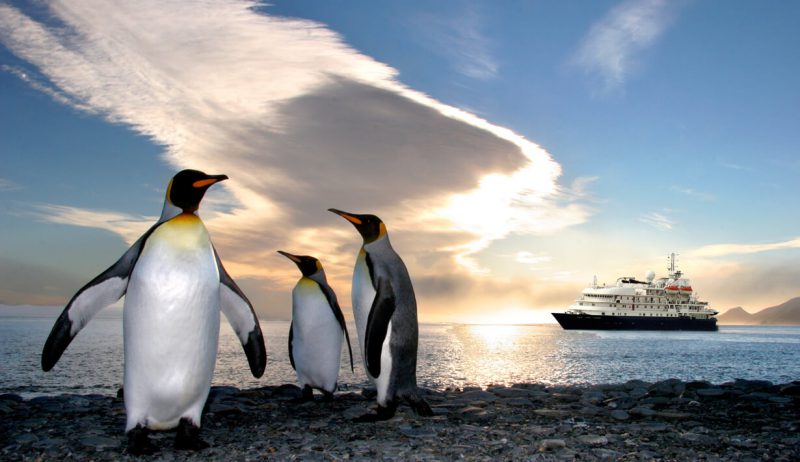
Luxury Falklands, South Georgia and Antarctic Islands
Imagine spending 23 glorious days sailing among the three most famous areas that make up a classic Antarctica cruise. Travelling from Buenos Aires to Ushuaia, this trip absorbs the very best of the wildlife in South Georgia as well as the scenic wonders of the Falkland Islands and the highlights of the Antarctic Peninsula. Around every corner your cruise opens another door full of adventure and so many incredible opportunities for indulging in photography in Antarctica. WIth the many extra excursions on offer too such as kayaking and even an overnight camp (read more about this experience here), this cruise has something for everyone.
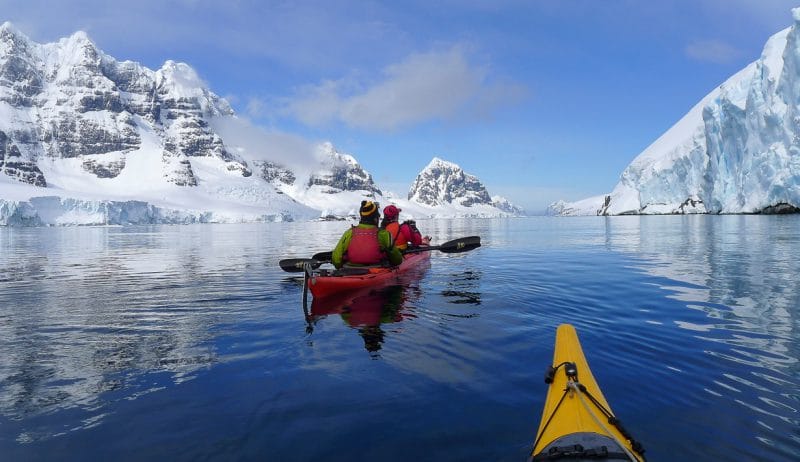
South Georgia and the Antarctic Odyssey
https://www.wildfoottravel.com/itinerary/6184/south-georgia-antarctic-odyssey-19-days
Joining the iconic expedition aboard the purpose-built Greg Mortimer ship and setting sail to discover the highlights of this wonderful part of the world will have any budding photographer snapping away at every turn. From the Fur Seals, Penguins and nesting Albatross of South Georgia to the captivating scenery of the Antarctic Peninsula that forms the backdrop to your every day, photography in Antarctica does not get better than this.

The Shackleton Route from Montevideo
https://www.wildfoottravel.com/itinerary/6011/shackleton-route-from-montevideo-22-days
Following in the footsteps of the intrepid Shackleton, this voyage takes in the very best of the beautiful Falkland Islands, South Georgia and the magnificent Antarctic Peninsula. Not only will you have the chance to witness some of the most breathtaking scenery of the region, but there is ample opportunity to marvel at penguin rookeries and seal colonies, as well as visit historical sites and even make a pilgrimage to Shackleton’s final resting place. This region of our world is nothing less that wondrous and if photography in Antarctica is on your agenda, you are in for a treat on this most classic of adventures.
